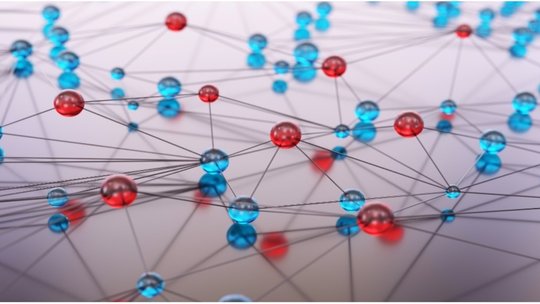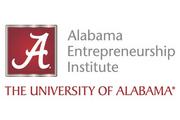
It seems like everything I read is focusing on artificial intelligence (AI). It is an amazing new tool that is available for our learning and development. However, AI and the information you receive from using it are dependent on the source of data the technology is using for its learning. AI does a great job of pulling in a variety of information to summarize and provide users with better, or at least, different, and unique answers to questions. In this article I want to remind leaders and managers about the power of employee intelligence, or EI, and ways to use EI to perhaps supplement your AI efforts and make better decisions.
Your employees are having day-to-day interactions with customers, vendors, and community members. The information in your employees' minds can provide leaders with valuable, additional, and unique data that will help leaders make better decisions. Of course, the same rules apply to AI also apply to EI. The data needs to be updated, aggregated, and analyzed so that the receiver of the analysis can use it to improve learning and decision-making.
The latest Leadership Pulse™ data, taken from a project I have been running since 2003, provides some insight into how useful employee data can be to leaders who are willing to learn how to obtain and analyze EI. The same type of intellectual curiosity that sets someone out to learn about AI should make that same individual curious about using EI. It may seem obvious that leaders learn from the knowledge of their employees, but the extent to which employee insights are used for decision-making is rarer than you might think.
Today, how do leaders learn from employees? It may be through important but limited one-on-one conversations, engaging in listening sessions or walking around, or focus groups and surveys. Many of these methods are not done frequently enough to gather ongoing trended data, and the questions used are normally too narrow to be a source of real discovery of unknown issues. Thus, the richness of employee data is often not part of many leaders' decision-making.

Asking about organization growth
I recently wrote a chapter about what we learned in 20 years of conducting the Leadership Pulse. This is a project I started when I was on the faculty at the University of Michigan, and we conducted quarterly surveys with a sample of leaders throughout the world. Our goal was to learn from using a real-time survey tool that allows us to not only collect data but also provide the leaders with access to their own data. Giving leaders their own personal responses and benchmarking encouraged them to continue participating.
When writing the 20-year report, I rediscovered the first set of questions that I used, and I decided to run them again in 2023. My goal when I started the work in 2003 was to ask leaders what they expect in terms of future business growth. Given the high amount of change we were experiencing in 2023, and the additional change we know will occur in 2024, I thought it may be a good time to bring back the Growth Projection Pulse™ questions.
Below in Table 1 is a summary of the results showing the percent of people from the sample (about 300 leaders) who expected growth and no change in the various growth categories studied. When I received the results of the survey, I remember thinking that people were more positive than I expected they would be. At this time, the news was talking about rising inflation, interest rates, the price of gas, and there was not a sense that growth was in the horizon. For example, in a report published June 1, 2023 by the Mercatus Center at George Mason University, they note that: “The Federal Reserve Bank of Philadelphia survey of 37 forecasters in February indicated negative real GDP growth in this year’s (2023) third quarter. Earlier, in a January Wall Street Journal survey of 79 economists predicted negative GDP growth in the 2023’s second quarter and third quarter growth at almost zero. In a more recent survey, in April, that panel moved the recession’s start to third quarter. In short, the prospects for the year ahead are surely biased toward slower growth, crossing the line to become recessionary.
Table 1. Percent of leaders predicting growth or no change obtained from mid-year leadership pulse

But as I looked at the data from the mid-2023 survey, which shows 80% or more growth or stable expectations, and then reviewed what happened at the end of 2023, I realize the people responding were pretty accurate at predicting the future. GDP was up 4.9% in the third quarter of 2023 and an estimated 2.6% in the fourth quarter. Employment-related metrics such as unemployment and participation rates showed minor change. We see these leaders from various parts of the world, companies, and job levels were able to predict what happened half a year in the future. The question then is what other kinds of information employees can share that can help leaders better prepare for the future and make better decisions?
Employee intelligence to drive your organization’s performance
Leaders can use employee intelligence to turn around their organizations, solve specific problems, or build for growth. One story comes to mind on this topic. I was walking around a manufacturing plant with the CEO of the organization. He was very proud of the high-quality interactions he had with his employees, and as we toured the site he would point to one person in each department. For each employee, he had a story about the last time he talked to that person, what a great relationship they had, and how much information that individual shared with him. When we were almost done with the tour, he turned to me and stopped. Then he said something like, “You know, I didn’t realize until now how many people I don’t hear from.” That is when the big light bulb went on for him. He didn’t have employee intelligence; he had selected conversation insights. Those are two different things.
He then moved on to developing a strategy for using employee intelligence to solve one of his problems at the plant focused on quality. We worked together on a three-month experiment. In month one we did a survey of all employees in the plant. It was very specific and short. We started the survey out by writing up a scenario talking about a recent quality challenge that everyone knew about. Then we asked employees to think about the topic overall and rate on a 0-to-100-point scale where the plant was today. Next, we asked them to explain the answer, and lastly, we asked each individual person to report one action he/she could personally take in the next 30 days (time frame is important) to improve quality.
After gathering the employee intelligence on this focused topic, we asked the leader to do a “road show” discussing the topic, results from the survey, and ideas that came out of the survey. This was Phase 2. After gathering intelligence, he shared the intelligence. Phase 3 was focused on developing action steps based on what employees suggested, and in a very short period there were significant and big improvements in quality.
In 2024 add EI to your AI efforts
In the project described above, we manually coded the data. Today organizations have the luxury of using multiple types of qualitative data analysis programs and artificial intelligence to sort through data and better understand results. Employee intelligence is high quality data that every organization has but that does not tap into frequently enough or with adequate focus to make better decisions. In your quest this year to use artificial intelligence, I strongly suggest you also talk to your leadership team about making an equivalent effort to tap into your own strategic EI assets.
If you want to learn more about EI or other initiatives to drive growth and innovation, contact Theresa M. Welbourne, Ph.D. or join the Growth and Innovation Leaders Forum.
